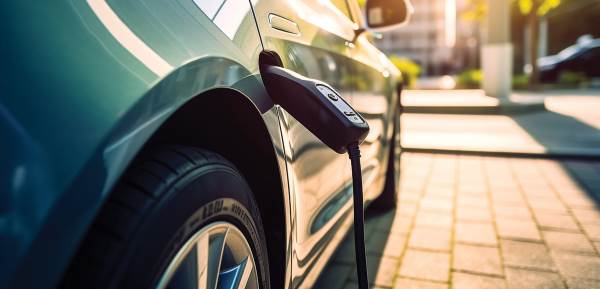A Deeper Dive into EV Costs

In May this year as part of SCA Australasia’s commitment to stay ahead of the curve on electric vehicle (EV) integration into apartments, we launched our Phase 2: Challenges Report exploration of electric vehicles in strata.
In a rapidly changing regulatory and innovation-rich environment, we’ve made significant updates to that document even over the last three months. If you get a chance, please head to the SCA Australasia website1 to our dedicated electric vehicles section and check it out.
One of the areas of the report that got the most interest and levels of enquiry were the costs of making buildings EV ready, the costs to owners, and some case studies that highlight those costs.
Due to that high level of interest, we’re going to spend some time taking a bit of a deeper dive into some case studies that might answer some of the multitude of questions we’ve received on the topic.
EV costs and case studies
A Large 100 Lot Strata Scheme Example
A strata scheme sought to undergo a retrofitting process, in order to upgrade the electrical infrastructure within their existing building to support EV charging for all residents. The first step was to retrofit the building, which is often referred to as providing the ‘EV Backbone’ to the building.
The scheme budgeted for 100 lots x $2,000 per lot – total of $200,000 to complete the retrofitting process. Lot owners then had the option to pay on average $4,500 to purchase and install their own EV charger.
Therefore, the total average investment per lot owner, of both contributing to the EV Backbone and their own personal charger, was $6,500.
Electrical Infrastructure Retrofitting
Ownership structures within the strata scheme will determine how the cost to retrofit the strata building is determined, and each scheme may be different in their approach. However, it is likely that each owner will have to contribute an equal amount of money at the same time as a contribution towards the required electrical infrastructure upgrades to the building, whether that be through the scheme’s sinking or reserve fund, special levies or other financial vectors.
EV Chargers
Privately owned assets (like personal EV chargers) will likely have to be paid for by the individual owner. However, if the building is ‘EV ready’, whether through being built EV ready or through a retrofit, then an owner may determine when they would like to implement their charger and incur the cost of the charging unit. If the EV charger is a common use charger utilised by the whole scheme, then the cost of the unit is likely to once again be split amongst the owners within the scheme.
Cost of Electricity
It is possible for the cost of the electricity required to charge an EV through a personal EV charger to be allocated directly to a given owners bill. However, in some cases specifically in larger developments, it may be necessary to install additional electrical metering technology that determines and measures electricity usage. There are many options, from flat rate tariffs spread among all lot owners (least equitable, but easiest to begin), to metering that identifies individual lot owners and can charge accordingly.
What is the process to go from start to finish in an installation case study like this one?
When making policy decisions that impact strata schemes, one has to take into account the methods by which strata communities make decisions.
Strata communities operate in a democratised system, where each member may vote on a given issue. Each jurisdiction throughout Australia and New Zealand may have legislation that dictates the different standards required for votes to implement changes to the scheme, including the installation of EV charging infrastructure.
This refusal to vote in favour of EV charging may manifest even if a resident offers to pay for a charger and associated costs by themselves, without requiring a full-scale upgrade of the electrical infrastructure within the building.
Frequently Asked Questions
There are so many intricacies to the integration of EVs in apartments and other strata complexes, and single case studies and overviews are not always adequate to answer the specific question you might have.
SCA Australasia, as well as the Phase 2 Challenges Report, has produced Best Practice Guidelines for members to access by logging into their member portal.
In addition, the NSW Government has some great EV FAQs, tools and resources on their dedicated website for EVs.
We’ll be writing frequently on the fast-developing topic as more legislation, regulation and innovation keeps happening with pace in this space.
1 Strata Community Association, Electric Vehicles in Strata, strata.community/electric-vehicles-in-strata
View Comments
(0)